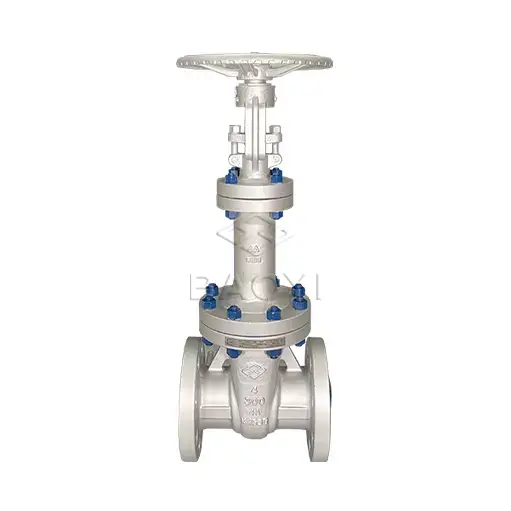How to solve Wedge Gate Valve leakage problem
2025-06-27
Introduction
Wedge gate valves are vital components in many industrial processes, including water treatment plants, oil and gas pipelines, and chemical industries. Their primary function is to control the flow of fluids by using a wedge-shaped gate that moves between two seats, forming a seal when fully closed. However, leakage in wedge gate valves can result in significant operational inefficiencies, safety hazards, and environmental concerns. Therefore, addressing the leakage problem is crucial for ensuring the proper functioning and longevity of the valve.
Causes of Wedge Gate Valve Leakage
There are several reasons why a wedge gate valve may experience leakage, including:
Worn or Damaged Sealing Surfaces:
The sealing surfaces of the wedge gate and the seat are designed to form a tight seal when the valve is closed. Over time, these surfaces may become worn or damaged due to constant operation, leading to an imperfect seal and leakage.
Corrosion:
Wedge gate valves are often exposed to harsh chemicals, high pressures, and temperature fluctuations. These conditions can cause corrosion on the sealing surfaces, weakening the valve's ability to prevent leaks.
Improper Installation:
If the valve is not installed correctly, it can lead to misalignment of the wedge and seat, causing uneven pressure on the sealing surfaces and resulting in leakage.
Excessive Pressure or Temperature:
Operating the valve beyond its designed pressure and temperature limits can cause deformation of the sealing components, leading to leaks. The wedge disc or the valve seat may become misaligned, compromising the seal.
Foreign Particles or Debris:
Foreign particles or debris entering the valve can obstruct the sealing area, causing gaps that lead to leakage. This is particularly common in systems with unfiltered fluids.
Material Defects:
Defective materials used in the manufacturing of the valve, such as poor-quality seals or improperly hardened surfaces, can result in premature failure and leakage.

Solutions for Wedge Gate Valve Leakage
Inspection and Maintenance:
The first step in addressing leakage is to inspect the valve thoroughly. Regular maintenance checks should be conducted to identify any signs of wear, corrosion, or misalignment. This may include visual inspections, pressure testing, and checking for abnormal noises or vibrations during operation.
Replacing Worn or Damaged Seals:
If the sealing surfaces are found to be worn or damaged, replacing the seals is a necessary step. The gate valve's wedge and seat should be replaced if they are beyond repair. When selecting replacement seals, ensure that they are made from materials resistant to the operating conditions, such as high pressure, high temperature, and chemical exposure.
Cleaning and Debris Removal:
Foreign particles or debris that obstruct the sealing area should be removed to ensure a proper seal. A thorough cleaning process may involve disassembling the valve and using solvents or mechanical means to remove any build-up. Additionally, the installation of a filtration system upstream of the valve can prevent debris from entering the valve in the future.
Re-aligning the Valve:
If misalignment is causing leakage, it is essential to realign the valve components. The wedge and seat should be checked to ensure they are properly seated and that there is no obstruction. Proper installation techniques must be followed to prevent future misalignment.
Repairing Corrosion Damage:
If corrosion is detected on the sealing surfaces, it is important to repair or replace the affected components. In some cases, surface treatments such as coating or hardening may be used to restore the surfaces and prevent further corrosion. Choosing the right materials with corrosion-resistant properties for the valve's construction is also important in preventing this issue.
Controlling Operating Conditions:
Ensuring that the valve operates within its design limits is crucial for avoiding leakage. Avoid excessive pressure or temperature beyond the valve's rated capacity. Installing pressure relief devices or temperature control systems can help regulate the operating conditions and prevent deformation or failure of the valve components.
Upgrading Valve Design:
In some cases, upgrading the valve to a more advanced design may be necessary, especially if the valve is outdated or unable to meet modern performance standards. Modern wedge gate valves may come with enhanced sealing technologies that provide better performance in extreme conditions.
Conclusion
Wedge gate valve leakage is a common problem in industrial applications that can lead to operational disruptions and safety hazards. By understanding the root causes of leakage, such as worn seals, corrosion, misalignment, and improper installation, and implementing appropriate solutions such as regular inspections, seal replacements, cleaning, and proper alignment, the leakage issue can be effectively mitigated. Maintaining the valve within its operating limits and selecting the right materials for construction are also essential in preventing future leakage problems. Timely and accurate repairs will extend the life of the wedge gate valve and ensure the efficiency and safety of the entire system.


